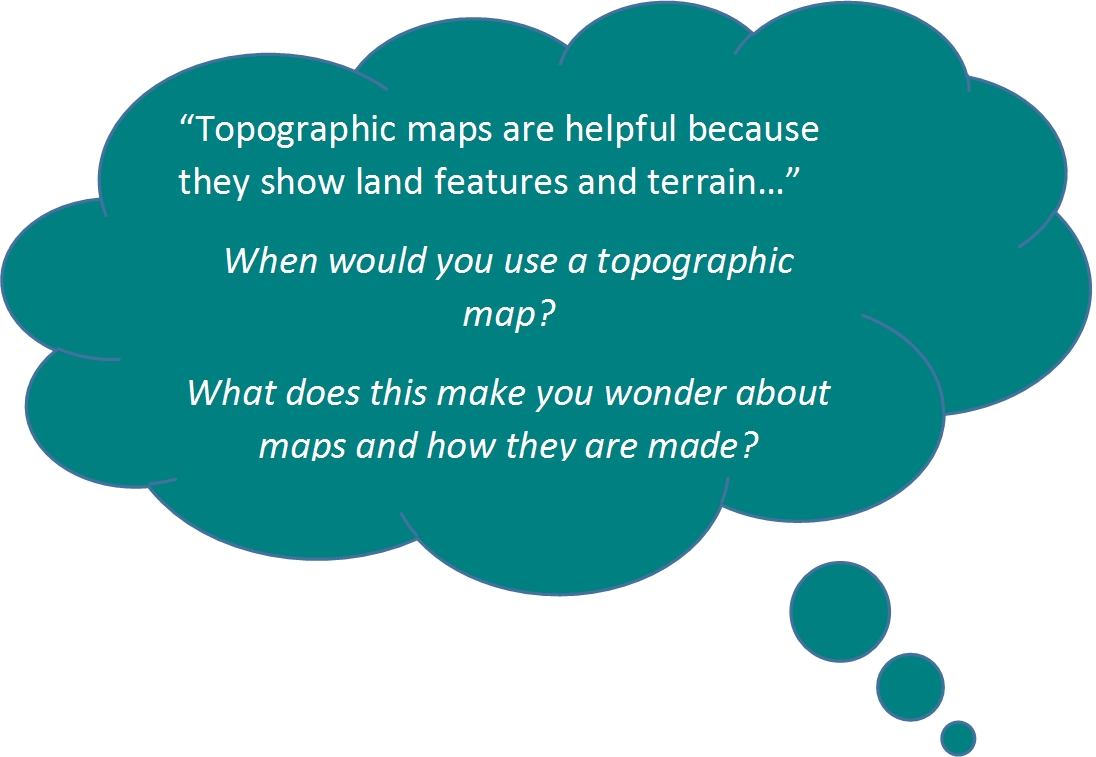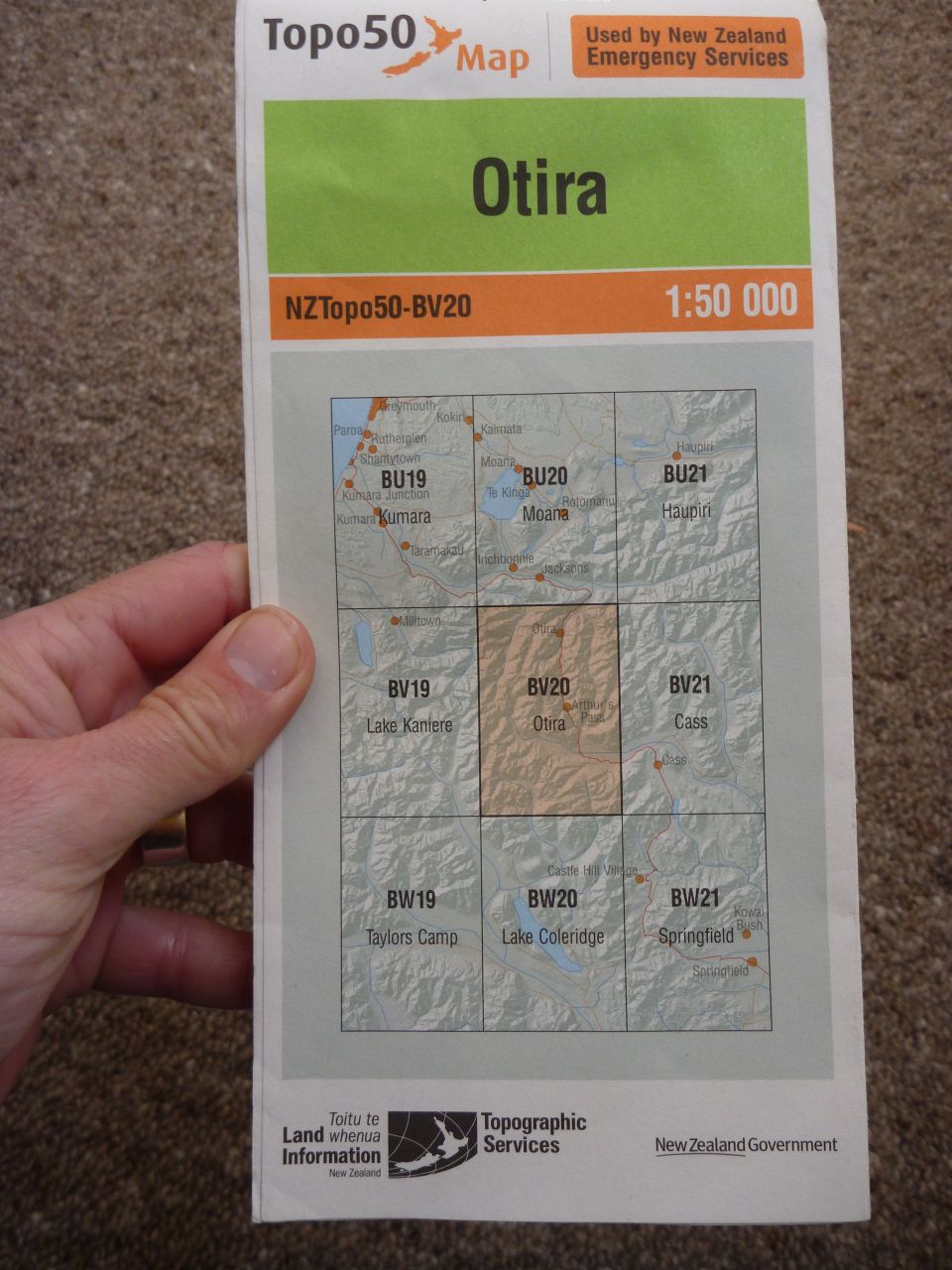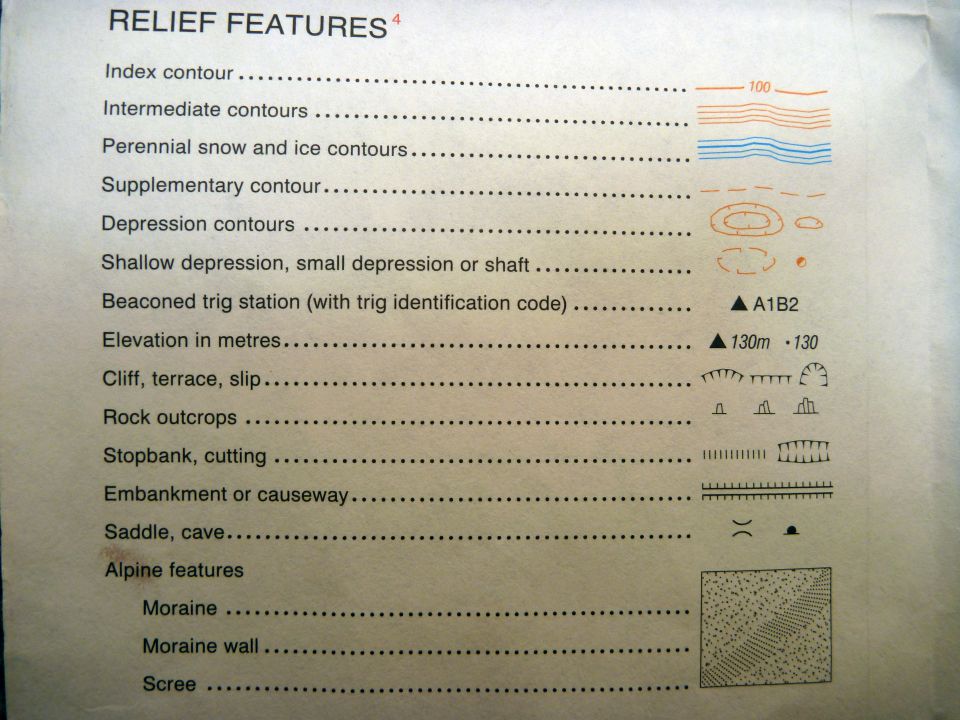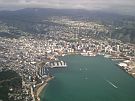Topographic Maps are helpful because they show land features and the shape of the land (topography).
Features
A topographic map shows the following features;
- cultural - roads, buildings, railways, airports, names of places and land features.
- hydrography - lakes, rivers, streams, swamps and tidal flats.
- relief - mountains, valleys, slopes and depressions.
- vegetation - wooded and cleared areas, vineyards and orchards.

Scale
The level of detail shown on maps depends on the scale of the map. A small scale map shows less detail than a larger scale map.
The most commonly used topographic map in New Zealand is the Topo50 map. These maps are at a scale of 1:50,000 which means one centimetre on the map equals 50,000 centimetres, or 500 metres on the ground.
Topographic maps include a north point. This shows the direction of Grid North and Magnetic North and is used to orient the map.
Legend
The legend on a map shows the symbols used to represent features on the ground. These features include roads, tracks, rivers, lakes, vegetation, fences, buildings, power lines etc. Given the size of the map it is not possible to show all features on the ground. Symbols are grouped in themes on the legend.
Contour lines
Topo50 maps show 20 metre contour lines. These lines join points of equal height and show the shape or height of the land. Contour lines that are close together show steep land. Contour lines that are far apart show that the land has gentle slopes.
Map Coordinates
Map coordinates can be shown as:
- Geographical coordinates, given as latitude and longitude values in degrees, minutes and seconds.
- Grid coordinates, given as easting and northing values, in metres.
To find out more about reading topographical maps go to the 36 page LINZ Topo50 Map guide (PDF 1.5Mb).
Visit the online topographic maps at http://www.topomap.co.nz/.









Comments
I wonder if trampers still prefer printed topo maps